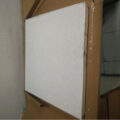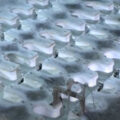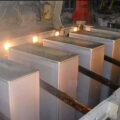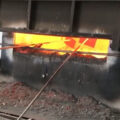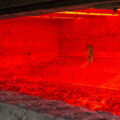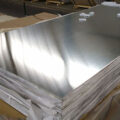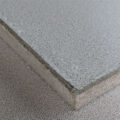Casting crack in aluminum casting is a kind of defect with great harm, it destroys the continuity of metal structure. In the subsequent extrusion or calendering process, it cannot be pressed together. So the ingot with cracks is regarded as an absolute waste product during ingot inspection. The existence of casting cracks seriously affects the production efficiency and economic benefits of aluminum processing enterprises. Therefore, it is necessary to systematically analyze and study them, take effective measures for cast aluminum repair in production, in order to reduce the occurrence of crack defects and improve the yield of ingots.

Classification of Casting Cracks
According to its formation process, casting cracks are usually divided into hot cracks and cold cracks.
Hot cracks are cracks formed in the effective crystallization interval. Taking round ingots as an example, the macroscopic manifestations are surface cracks, center cracks, ring cracks, radial cracks, gate cracks, etc.
Cold cracking refers to cracks formed when the alloy is below the solidus temperature of the alloy, and most of them occur at around 200°C. Side cracks, bottom cracks, and splits are mostly cold cracks.
Formation Mechanism of Casting Cracks
Cold cracking often occurs in the stretched parts of castings. Those castings with large wall thickness differences and complex shapes, especially large and thin castings, are prone to cold cracking. All factors that can increase casting stress, reduce casting strength and plasticity will promote the development of cold cracks.

Hot cracking is a common casting defect that is difficult to completely eliminate. Except for the Al-Si alloy, it can be found in almost all industrial deformed aluminum alloys. The formation mechanism of thermal cracks mainly includes strength theory, liquid film theory, and crack formation theory. Among them, the strength theory is general. Based on the research results of the high-temperature mechanical properties of the alloy, it is believed that all alloys have a “brittleness temperature range” of extremely low strength and extremely low elongation in the solid-liquid zone above the solidus temperature. When the alloy cools in this interval, if the stress caused by shrinkage exceeds the strength of the metal at this time. Or the deformation caused by stress exceeds the plasticity of the metal, which will lead to the generation of hot cracks.
In the production process, there are generally no pure hot cracks or cold cracks. Most of them first generate hot cracks, and then develop from hot cracks to cold cracks during the cooling process.
Cast Aluminum Repair
The influencing factors of casting cracks are mainly related to melt quality, casting equipment, casting process conditions, and grain structure. Therefore, we can take corresponding measures from these four aspects, so as to prevent the occurrence of casting crack.
Reduce the impurities content
The optimization of the chemical composition can improve the moldability of the alloy, and reduce cracking of the ingot. When the impurity content is high, the lattice distortion in the alloy structure increases, the internal stress increases, and the ability to resist plastic deformation greatly decreases, resulting in the alloy being prone to cracking.
Reduce the gas content and inclusion content
When smelting aluminum and aluminum alloys, the furnace gas and air gas should interact with the molten aluminum at the interface, resulting in processes such as compounding, decomposition, dissolution, and diffusion. The aluminum oxidizes and absorbs gas.
Because the H2 in the gas absorbed by the melt accounts for more than 85%, and the solubility of hydrogen in the melt decreases as the temperature decreases. A large amount of gas is precipitated when the melt crystallizes and solidifies, and the ingot pores are formed. Inclusions and pores can weaken the connection between the grains, causing stress concentration, reducing the plasticity and strength of the ingot, resulting in casting cracks.

Cast Aluminum Repair
AdTech can solve the aluminum alloy cracks. The online degassing unit and CFF filtering unit developed by AdTech help for Cast Aluminum Repair, they can reduce the porosity and cracks of aluminum alloys.


